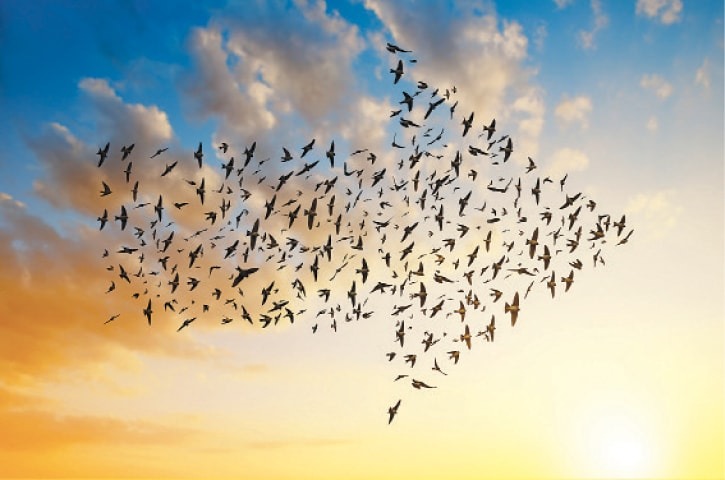
Follow WOWNEWS 24x7 on:
Updated: June 16, 2025 21:22

Every year, billions of birds make stunning cross-continent migrations, seemingly landing at precise breeding or wintering sites—thousands of miles away from where they started. How do they manage it? The answer lies in a fascinating mixture of instinct, sensory perception, and even a touch of quantum physics.
Key Highlights:
Integrated Compass and Map
Birds use a mix of innate genetic scripting and experience-based learning. Young migrating birds possess an internal script—e.g., "fly three weeks southwest"—but no destination to which to go. Through experience accumulation, they build up a mental map, so adults can come back year after year to the same location, often even to the same branch.
Celestial Navigation:
Birds utilize the sun, the stars, and even the polarization of the skylight to navigate. The internal clock and the position of the sun guide the day migrants, and most of the night migrants utilize the rotation of the stars around the North Star as a compass. Taking away their circadian rhythm or hiding the stars will confuse them.
Magnetoreception—A Sixth Sense: Birds can sense Earth's magnetic field because they contain special proteins like cryptochrome in their eyes and potentially magnetite in their beaks. Recent research shows that they can literally "see" magnetic field lines by using quantum effects to decode this and alter course—even in the presence of clouds or no landmarks.".
Landmarks and Smell:
Seasoned birds borrow cues from known coastlines, mountains, and rivers as visual cues. Birds also utilize their olfactory sense, especially when flying over water or unfamiliar terrain.
Learning and Adapting
Whereas young birds rely mostly on inherent talent, adults can adjust direction if knocked off target, using their learned map and a combination of senses to find their way again. This ability to integrate different cues is what makes bird navigation so precise—even in ever-changing environments. In short, migratory birds are nature's master navigators, blending inherited directions, sensory magic, and experience to navigate the world—year by year, and frequently with pinpoint precision.
Source: Scientific American, Live Science, Times of India





